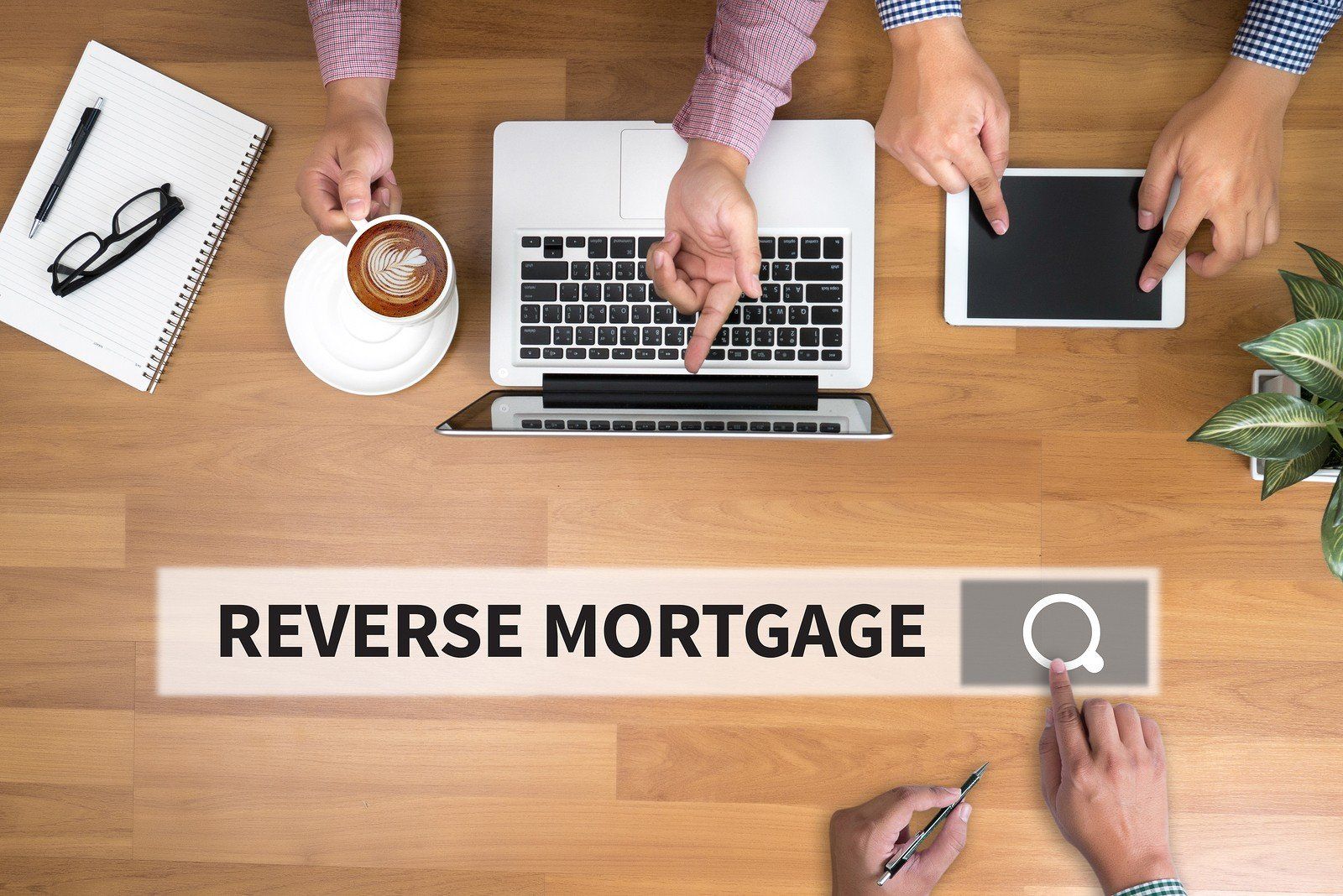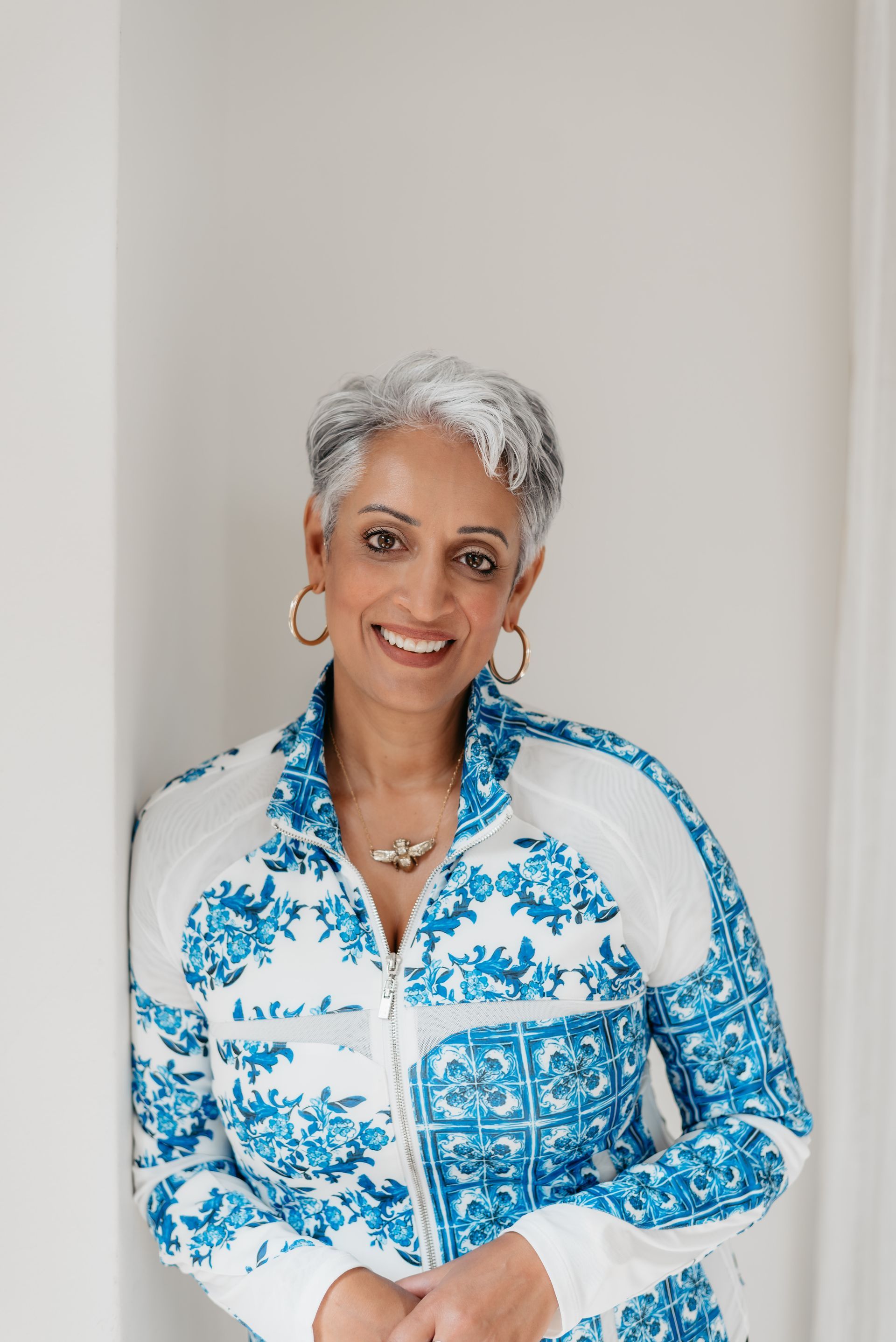Mortgage Articles

In order to secure a mortgage today you better be ready to jump through a lot of hoops. As house prices continue to rise, and as the government continues to intervene, it doesn’t look like we’re going to see a reversal of this trend anytime soon. Mortgage qualification just isn’t what it used to be.

Negative equity occurs when your property is worth less than the outstanding balance on your mortgage. It’s not a very good place to be, especially if you’re planning for your retirement. Another term you might have heard is “being underwater” in your mortgage. The reality is, most Canadians have a significant amount of equity built up in their homes and this equity can be used to help plan through retirement. Dealing with a negative equity position is very uncommon, one of the only times the idea of negative equity even comes up is when discussing a reverse mortgage. Usually, the question is asked something like this: “If my home has depreciated in value at the time it is sold, and the mortgage balance is growing, will I (or my heirs) end up owing more than the house is worth?” And in the case of a reverse mortgage through the Home Equity Bank, the answer is no. No, assuming you meet all your mortgage obligations, the amount you will pay on your due date will never exceed the fair market value of your home. This is what they call their No Negative Equity Guarantee. As a reverse mortgage doesn’t have any payments required throughout the life of the mortgage, naturally, the outstanding balance grows with time. But as the Home Equity Bank has more restrictive initial qualifying guidelines than a standard mortgage, even though the balance is growing, it rarely grows beyond the value of the home. And if it does, Home Equity Bank covers the difference. Compare that with a standard mortgage, where if you wanted to access your home equity, you can potentially refinance up to 80% of the property value, or in the case you're downsizing, you can buy a new property with as little as 5% down. In this case, when the question is asked “is it possible to end up owing more than my property is worth” with a standard mortgage, the answer is yes. If the market takes a turn, you could find yourself in a negative equity position. Understanding your mortgage options through retirement is crucial to making the best choice for you. Each person’s financial situation is different and there is no one size fits all advice that can be provided on a blog. As a Lifestyle Mortgage expert, I specialize in helping older Canadians to understand their options, and provide counsel to help them make the best choice. If you have any questions at all, and would like to discuss your financial situation with me, please contact me directly anytime.

For older Canadians – living on a set income can be difficult. To make matters worse, unexpected medical events and many other financial matters arise that can make a tight financial situation even worse. As a result, a growing number of seniors in Canada turn to the equity in their home as a source of financial relief. What Is Home Equity? Home equity can be defined as the actual value of your property. Simply put, home equity is the difference between what you owe on your home and your homes fair market value. For instance, if your home has a market value of $300,000 and you only owe $50,000, you have $250,000 of equity in your home. One of the biggest advantages of home ownership is the opportunity to build equity. Even though you may not be able to sell your equity, home equity loan options allow you to access the equity in your home to take care of any of your needs, expenses, or to simply live a higher quality of life. Generally, there are three different types of home equity loan options for seniors: a home equity line of credit, a second mortgage, and a reverse mortgage. The following information explains each of these three options in detail. What Is a Home Equity Loan? A home equity loan is a type of loan in which the borrower uses the equity of his or her home as collateral. Home equity loans are often used to finance major expenses such as home repairs, medical bills, a new car, university tuition for child, or other contingencies faced by homeowners. Home equity loans can be used only as re-finance options and not as collateral to purchase a new property. What Is a Second Mortgage? Home equity in Canada can be used as collateral for a second mortgage on your home. The bank issues you a cheque in a lump sum based on the available equity in your home for you to spend as you like. A second mortgage typically has a set amount of time you have to repay the loan (term) as well as fixed interest rate. After you have received the proceeds from your loan, you need to make monthly payments on the second mortgage until its paid in its entirety. What is a Home Equity Line of Credit (HELOC)? A home equity line of credit (HELOC) is similar to a second mortgage. However, the issuing financial institution doesn’t release all of the funds in one lump sum. The money can be accessed as you need to or when you choose to for whatever reason. For example, if you have $200,000 of available equity and have a HELOC for $125,000, you can access these funds using similar features as you would for a chequing account. You will only be responsible for paying interest on the amount of equity you actually use. A few typical characteristics of HELOCs are: Fluctuating interest rates In many cases, lenders offer a special low “introductory rate.” However, this rate will commonly increase after a month or two. While HELOCs may seem to be the best way to access the equity in your home, the fluctuating interest rates can cause your payments to drastically increase. Advance periods The majority of HELOCs have what is known as an advance period, which is a set period of time you are allowed to access the money in the HELOC. This period can be five years, ten years, etc. After the advance period is over, you are not able to withdraw any additional money. More importantly, following the advance period is the repayment period, which is the time you are supposed to repay any borrowed monies. Reverse Mortgage Home Equity Loans If you are a homeowner in Canada and are 55 years of age or older, you may qualify for a reverse mortgage. A reverse mortgage is designed for you to convert the equity in your home into cash to help pay for increased living expenses, health care costs, a home renovation, a vacation, or anything else you need. While traditional mortgages require you to pay monthly payments, a reverse mortgage does not require monthly payments. With a reverse mortgage the bank makes monthly payments or a lump-sum payment to you based on a percentage of the value and equity of your home, your age, amount of secured debt, property type, and property location . You continue to live in your home and must meet certain requirements. Reverse mortgages are designed to offer you another stream of income so you can spend your golden years living comfortably. After you are deceased, move, or sell, the loan will be reconciled with the value of the property. Key Differences in Home Equity Loan Options Disbursing funds Reverse mortgages offer an enhanced level of flexibility. You can receive monthly payments or you can choose to receive a large lump sum payment. Home equity lines of credit allows you to access the funds through a credit card and/or a checkbook. However, it’s important to understand you will only be able to access this credit line during a set advance period. After the period has expired, you will be expected to begin repaying the balance. Second Mortgages in Canada disburse the proceeds in one lump sum payment. Repayment Reverse mortgages offer the premier and most formidable solution for seniors in Canada with deferred repayment. This means your loan will only become due if you become delinquent on your insurance and/or property taxes, you move, if the home falls into disrepair, you sell the home, or you pass away. In most cases, a reverse mortgage is repaid from the sale of the home after the death of the homeowners. This allows the seniors to live comfortably, vacation, and enjoy time with their family while they are alive without amassing a significant amount of secured debt. HELOCs have a repayment function based on the amount that was borrowed as well as the current interest rate. Considering interest rates change, your monthly payment could be affordable one day and unaffordable the next. This repayment option is the least favorable for individuals who are on a set income. It may become a challenge for seniors to service the debt, especially if they are looking for home equity loan options to supplement reductions in income during retirement. Seniors may find it difficult to qualify for a HELOC as there are income requirements. They may stand to lose the property to repay the loan, if the lending institution decides to recall the loan. Second Mortgages set monthly payments based on a fixed interest rate, which is more favorable than the HELOCs’ fluctuating payments, but less favorable than the terms of a reverse mortgage. Second mortgages, reverse mortgages, and HELOCs all enable you to get cash out of your available equity. While they have this in common, they differ in terms of disbursement, repayment, and several other areas. If you are over the age of 55 and are interested in a source of long-term income, reverse mortgages are the premier solution. Reverse mortgages are designed to allow you to truly enjoy your golden years in your home. With the proceeds from reverse mortgages, you can pay off debts, renovate your home, cover health care costs, help family members, take a vacation, and live comfortably. These types of home equity loans offer you another stream of income, so you can enjoy the rest of your life. This article is the property of HomEquity Bank and has been published with permission.

In this article, let’s separate fact from fiction. If you are considering a Reverse Mortgage, it is important you can make an informed and intelligent decision. Reverse Mortgages have been available in Canada for 25 years, but there are still many myths and misconceptions about them – some understandable and some are not accurate. What exactly is a Reverse Mortgage? A Reverse Mortgage is a loan available only to homeowners 55 or older. The amount you can borrow is based upon several factors including your age and the value of your home. What’s the difference between a Reverse Mortgage and a traditional loan? You are not required to make any payments on a Reverse Mortgage until you choose to move or sell your home. (However, you can make payments on the loan if you choose to do so.*) *Prepayment charges may apply. When you do decide to move or sell, the loan is repaid from the proceeds of the sale of the home. After the loan is repaid, all remaining money belongs to you and your estate. How much equity (money) will be left in my home after I repay the loan? On average, homeowners have well over 50% of the value of their home left to enjoy after repaying the loan. This money belongs to you. The exact amount will depend upon several factors, including: the amount of your loan, the value of your home, and the amount of time passed since you took out the loan. Can I be forced to sell my home and repay the loan? No. You always maintain complete ownership and control of your home at all times. You can never be forced to sell or move to repay the loan. All you have to do is keep your property in good maintenance, pay your property taxes and property insurance.. What happens if I or my spouse passes away before the loan is paid? The surviving spouse is under no obligation to make any payments until they move or sell the home. If you are the sole borrower, and you pass away, the loan is repaid when the estate sells the home. After the loan is repaid, all remaining money belongs to your estate and/or your heirs. What’s the difference between a Reverse Mortgage and a Home Equity Line of Credit? With an Equity Line of Credit, you must make regular payments on the loan. With a Reverse Mortgage, you are under no obligation to make payments on the loan until you move or sell. This makes Reverse Mortgages extremely appealing to people on a fixed income who cannot afford to make regular repayments. Another key difference is that you can be asked to repay your Line Of Credit at any time at the lender’s discretion. With a Reverse Mortgage, you cannot be forced to repay the loan until you decide to move or sell. What are the interest rates on a Reverse Mortgage? Interest rates on Reverse Mortgages mirror the rates charged on other home equity loans. They are usually somewhat higher than the rates charged for a Line of Credit because you are not required to make monthly payments or repay the loan until you move or sell your home. Who offers Reverse Mortgages in Canada? In Canada, Reverse Mortgages are offered directly to the public by HomEquity Bank, provider of CHIP Reverse Mortgage. The CHIP Reverse Mortgage is also available through all major Canadian banks, as well as credit unions, mortgage brokers and financial planning organizations. This article is the property of HomEquity Bank and has been published with permission.

Unlike our American neighbours, when Canadians explore the option of a reverse mortgage, there is only one provider, HomEquity Bank. In America, there are many companies who offer a reverse mortgage and as a consumer, on top of familiarizing yourself with the concept, you also have to research the best interest rates, read the fine print and compare them to a reverse mortgage provider that best caters to your situation. In Canada, it is much easier since, HomEquity Bank, is the only provider of Reverse Mortgages. However, Canadians are encouraged to familiarize themselves with the concept of a reverse mortgage and understand how the product works in order to determine if it is the best option for their financial situation. One way to do this is to get a free estimate of how much money you can get with a CHIP Reverse Mortgage. This estimate is based on your profile and home condition. You can also find out some of the frequently asked questions about reverse mortgages in Canada. To get you started in your understanding of a Reverse Mortgage in Canada, below is some basic information about the CHIP Reverse Mortgage. What is CHIP? CHIP is the name of HomEquity Banks’ reverse mortgage product. It is a loan secured against the value of your home. It allows you to unlock up to 55% of the value of your home without having to sell or move. The money you receive is tax-free and you can use it towards any of your personal needs such as: Pay off debts/Consolidate debt Home renovations and repairs Unexpected expenses (medical, emergency) Financially aid your children/grandchildren Improve or maintain your standard of living Pay for a vacation or a special purchase Who is eligible for CHIP in Canada? Canadian Homeowner (own your home) Your home is your primary residence Age 55 or older Why CHIP (benefits)? No Health Checks There are loans that require a health check to ensure that the recipient(s) (of the loan) are in good health to pay off the loan. With a reverse mortgage, since there are no regular monthly payments required until the homeowner(s) move, sell or pass away, health checks are not a requirement. Keep Your Home And Maintain Ownership Of Your Property Many people often ask whether the property title of the home gets transferred to the bank once the reverse mortgage is approved. The bank simply loans you a percentage of the value of your home in tax-free cash, but the title and ownership of the property remains yours. However, this means you must continue to pay your property taxes and maintain your home so that it remains in good condition. No Regular Monthly Payments Required The biggest advantage and feature of a reverse mortgage in Canada, is that you don’t have to make any regular monthly payments until you move, sell your home or pass away. Unlike a regular mortgage, where you have to maintain your monthly payments, a reverse mortgage lets you use the money as you please and gives you freedom from payments for as long as you live in the home. Once the homeowners move, sell the home or pass away however, the reverse mortgage including interest and principal is paid off from the home’s sale proceeds. The Money Borrowed Is Tax-Free And Does Not Affect Your OAS Or GIS Since the income you receive from a reverse mortgage is tax-free, it does not have any impact on your Old-Age Security (OAS), Guaranteed Income Supplement (GIS) or income from your Registered Retirement Savings Plan (RRSP) that you may be receiving. Choose How You Plan To Spend The Money One of the greatest benefits of a reverse mortgage is that you are in complete control of the loan and you are free to spend it on whatever needs you require it for. You Will Never Owe More Than The Value Of Your Home With a reverse mortgage you will be guaranteed that when you or your estate has to repay the loan, it will never exceed the fair market value of your home at the time it is sold. But keep in mind that your property must be kept in good maintenance and your property taxes and insurance have to be up to date and not in default. Relieve Financial Stress A reverse mortgage loan can help you consolidate your debt and clear your monthly payments so that you can live the rest of your life financially stress free! Enjoy Retirement A reverse mortgage loan will help you clear your financial burdens and allow you to enjoy your retirement. You worked hard your entire life, now is the time to enjoy the fruits of your labour. Take Control A reverse mortgage loan is essentially the money from your home equity. So take control of what you own and make it work toward your needs now! Reverse mortgages are definitely not for everyone, but they are a great option for many Canadian seniors who are looking for that extra financial security. To find out more about a CHIP reverse mortgage in Canada, Contact me to see if a Canadian reverse mortgage is a good option for your financial needs. This article is the property of HomEquity Bank and has been published with permission.

Retirees Concerned About Rising Prices Although free of many financial obligations of their working lives, many retirees are now worried about not having enough income to keep pace with rising prices for everything from gas to food, never mind indulging in dream vacations, renovations, and just maintaining their standard of living. Fortunately, the solution for many seniors with money concerns is very close to home; in fact, it is their home! That’s because after years of watching the value of their homes appreciate, many retirees today have significant equity built up in their homes. Equity that can be a ready source of money they can access with a product called a Reverse Mortgage. Reverse Mortgage is a Special Type of Loan Basically, a Reverse Mortgage is a special type of loan that allows you to borrow against the value of your home. However (and this is a HUGE however), unlike traditional loans, you don’t have to repay the loan for as long as you own and are living in your home. This makes Reverse Mortgages appealing to seniors on fixed incomes. In Canada, reverse mortgages are offered as the CHIP Reverse Mortgage by HomEquity Bank. They allow clients over 55 to access up to 55% of their home’s value. Given that there are no medical or income qualifications, and you don’t have to service or repay the debt until you decide to move or sell your home, CHIP can be a convenient and an affordable way to borrow money. Although interest on the amount of a CHIP Reverse Mortgage accumulates over time, so does the home’s entire value. On average, over 50% of the home’s equity remains at the time of repayment. In more active property markets, many clients may have more equity remaining at the time of repayment than the value of their home at the time they took out a Reverse Mortgage – and they will have had the use of those funds to use in the meantime. By offering clients access to the equity in their homes as tax-free cash, the CHIP Reverse Mortgage makes it easier to manage day-to-day cash flow with no ongoing interest payments, and no set repayment date. In a recent Environics survey commissioned by CHIP, 45% of financial advisors said they would recommend a reverse mortgage as an alternative to depleting their clients’ investment portfolios. 50% of advisors would recommend accessing home equity instead of asking clients to reduce everyday expenses. More than half were likely to recommend a reverse mortgage over advising their clients to sell their home and downsize. A CHIP Reverse Mortgage should be one of the first options considered when planning long-term financial security. After years of working for your house, why not put your home equity to work for you in retirement? This article is the property of HomEquity Bank and has been published with permission.

Just what is a reverse mortgage? You may have heard about this financial product. Maybe a friend or a friend of a friend has one. However, there’s a lot of misinformation out in the world about these types of loans. Nearly 70 percent of Canadians own their own home. For the vast majority of those homeowners, their home is their largest single investment. That can be frustrating as people retire and see the value of their home increasing and their monthly income decreasing. One easy way to get access to some of that money in your house is with a reverse mortgage. What is a reverse mortgage? Simply put, a reverse mortgage is a financial product that allows Canadian homeowners age 55 and older, who either own their homes completely or who have a sizeable equity in their homes, to get up to 55 percent of that equity to use for things like medical expenses, home repairs, visits to see their grandkids or simply day-to-day living expenses. When you take out a reverse mortgage in Canada, you don’t have to choose between staying in the home where you’ve created memories for decades and moving so you can live comfortably in your retirement. The way a reverse mortgage works is that as long as you live in your home, you’re not required to make any principal or interest payments to repay the amount of equity you’ve used. (Of course, you’ll still be responsible for your property taxes, homeowners’ insurance and maintaining the property in good standing.) The loan becomes due when you move or pass away. If you have heirs, they can pay the outstanding loans from their own funds, or use the funds from the sale of the property. In order to qualify for a reverse mortgage, you or your spouse must be at least 55 years of age. (However, the older you are, the more money you are likely to qualify for.) The property also needs to be your primary residence, not a vacation home or a rental property. Some mobile homes may not qualify for this type of loan – it is best to check with HomEquity Bank, the only providers of reverse mortgages in Canada. Reverse mortgages in Canada differ somewhat from similar products offered in the United States. Reverse mortgage myths debunked There’s a lot of conflicting and inaccurate information circulating out there about reverse mortgages in Canada. To help you better understand this product, we’ve listed just a few of the more common myths below: 1. Reverse mortgages are a new product. Reverse mortgages have been available in Canada for more than 25 years. 2. Many people are dissatisfied with their reverse mortgages. According to a recent survey by HomEquity Bank, 94 percent of reverse mortgage customers would recommend this type of loan to others. 3. Your children will lose the family home. Your heirs have the opportunity to pay off your reverse mortgage after you pass away and keep the property. Plus, the program guarantees that they will never owe more than the fair market value of the home, should market conditions change. 4. You have to be “old” to get a reverse mortgage. Reverse mortgages are available to Canadian homeowners age 55 and older. Of course, the older you are when you apply for the loan, the more money you are likely to qualify for. 5. You no longer will own your home. You will continue to own your home after you receive funds from your reverse mortgage and you will remain on title until you pass away or move out of the house. 6. I’m guaranteed 55 percent of the equity in my home. Unfortunately, this is not the case. The amount you receive from the reverse mortgage loan will depend on the market value of your home, the location and property type, and the age of the homeowners. The maximum you could receive is 55 percent of the equity in your home. What IS true about reverse mortgages 1. You have to stay current on property taxes and insurance. Just as before, you are required to keep paying your taxes and insurance after you receive the money from your reverse mortgage loan. 2. There are no payments required. As long as the homeowner(s) remain in the home, there are no payments required on either principal or interest of the loan. 3. You can stay in your home as long as you want. No one is going to force you to move if you take out a reverse mortgage loan. That’s true whether you take out the loan at age 55 or age 80. So you see, most of the negative things that you may have heard about reverse mortgages in Canada are simply not true. Federal and government agencies do provide some income sources like Canadian Pension Plans, Old Age Security Pension Plans and other benefits to seniors. A reverse mortgage may not be the right solution for every senior homeowner, however, this financial product can help many older Canadians tap into the value they’ve accumulated in their homes and use those funds to boost their monthly income. This article is the property of HomEquity Bank and has been published with permission.




